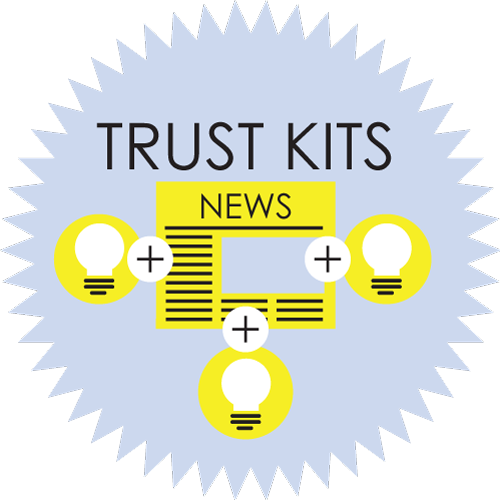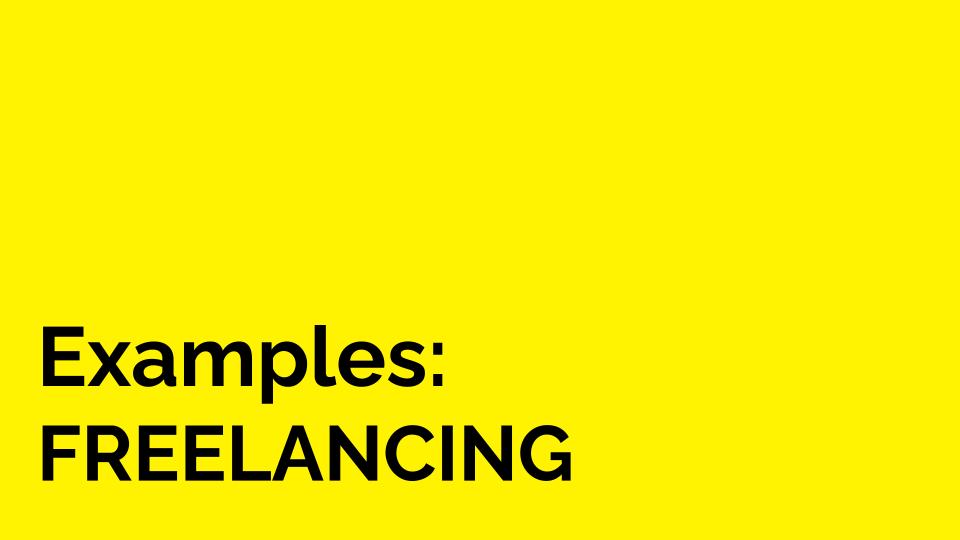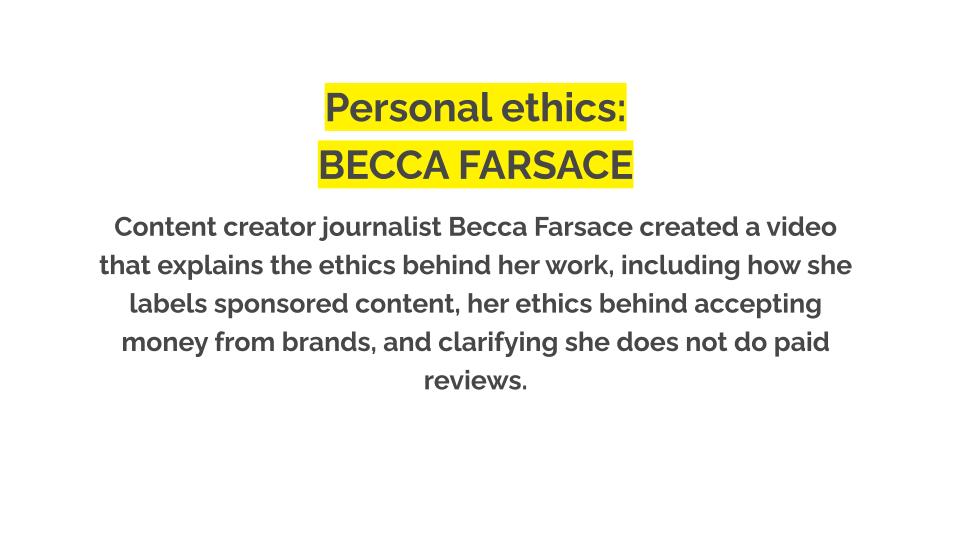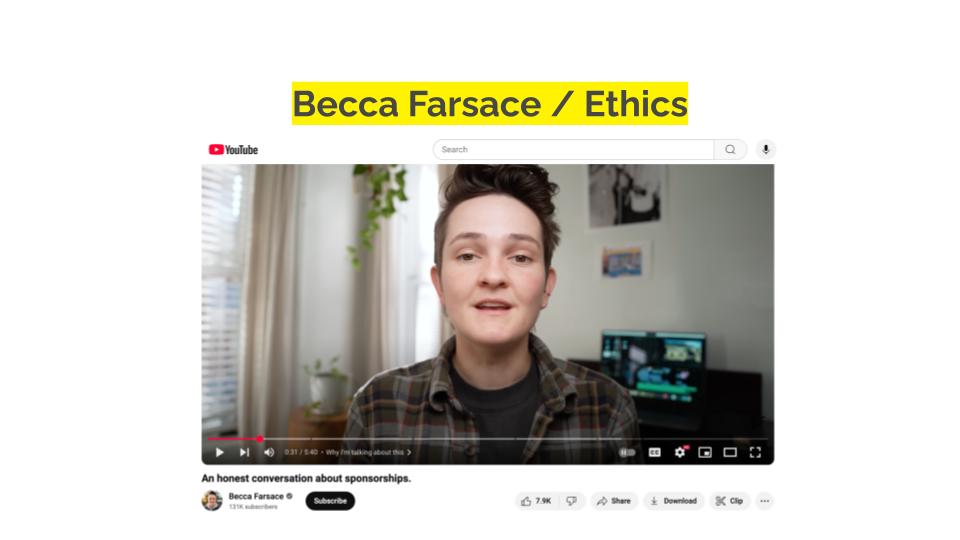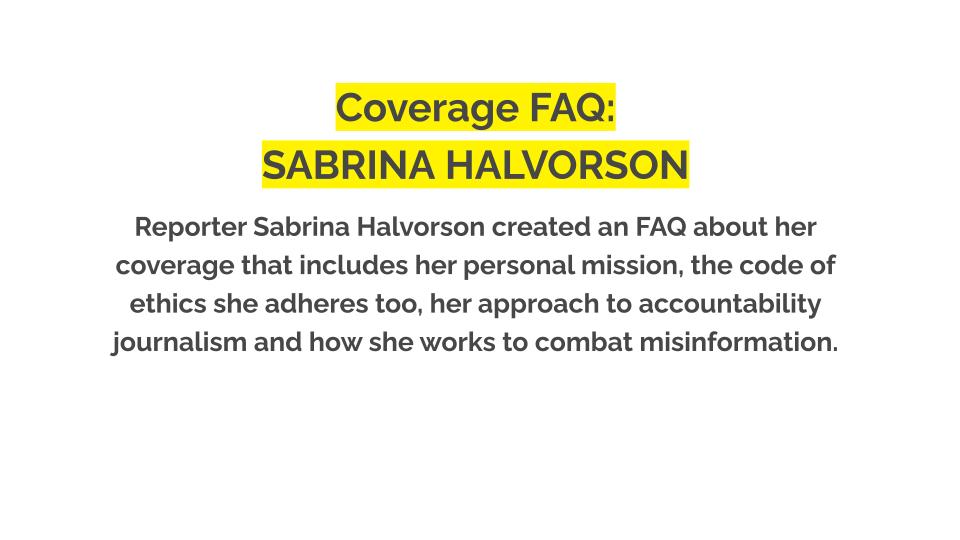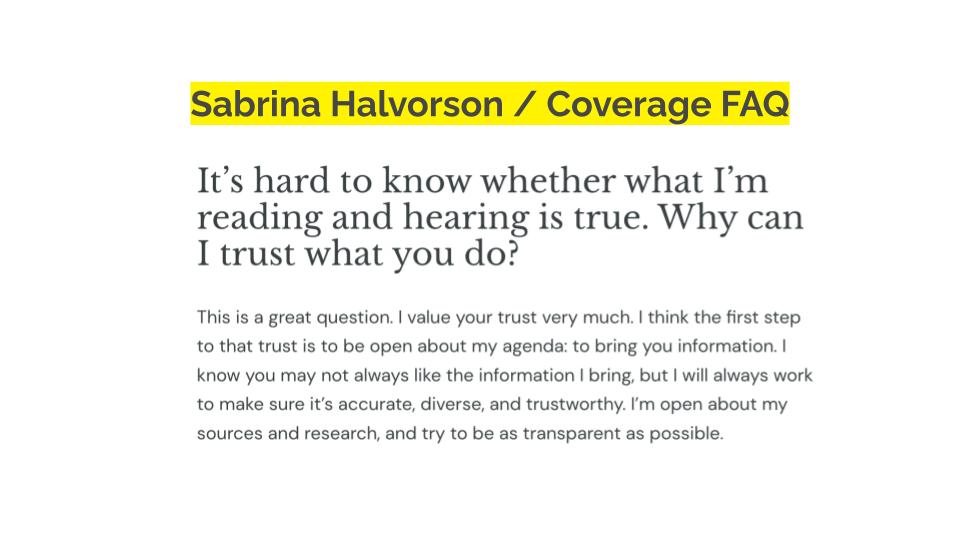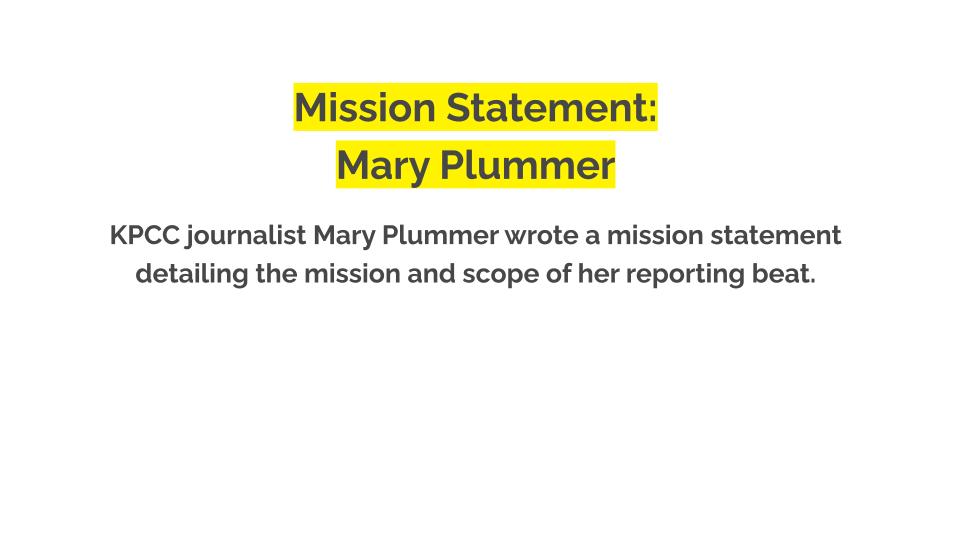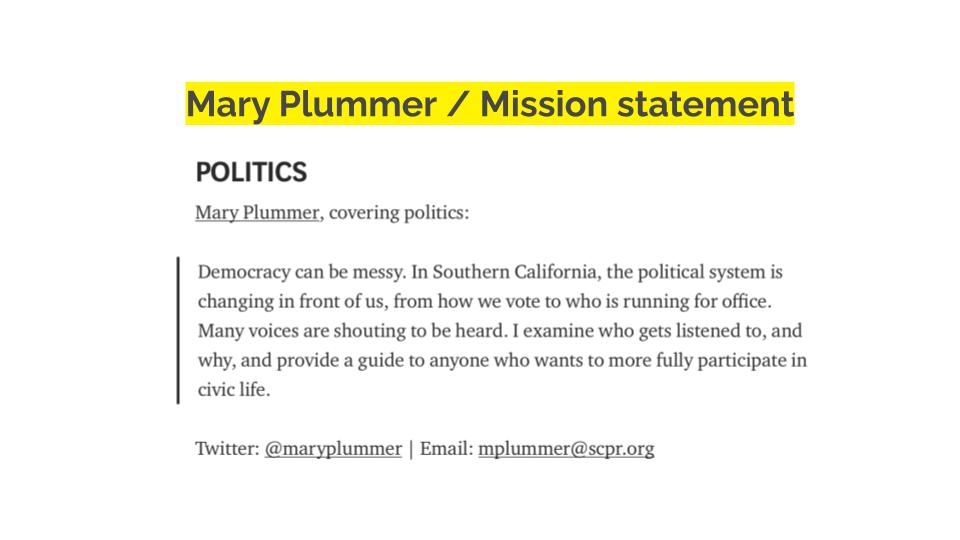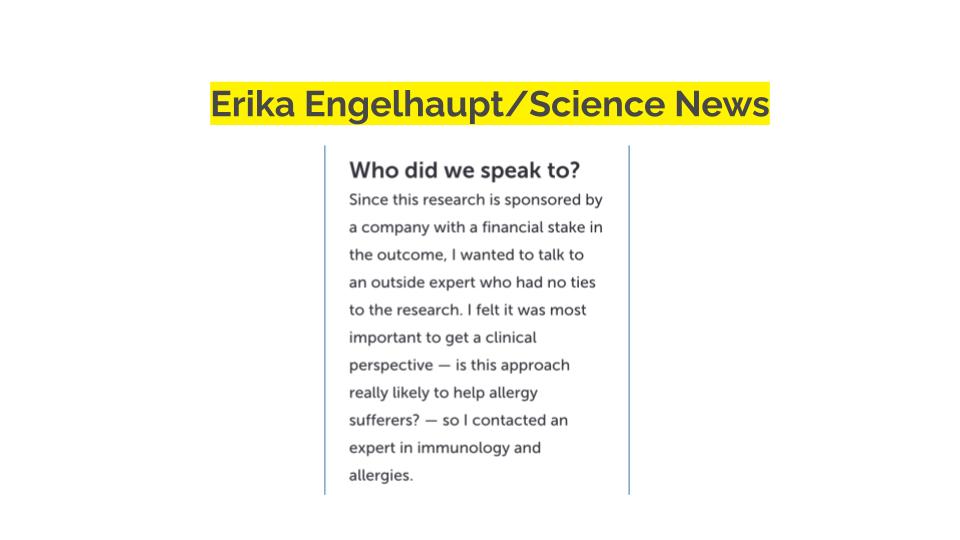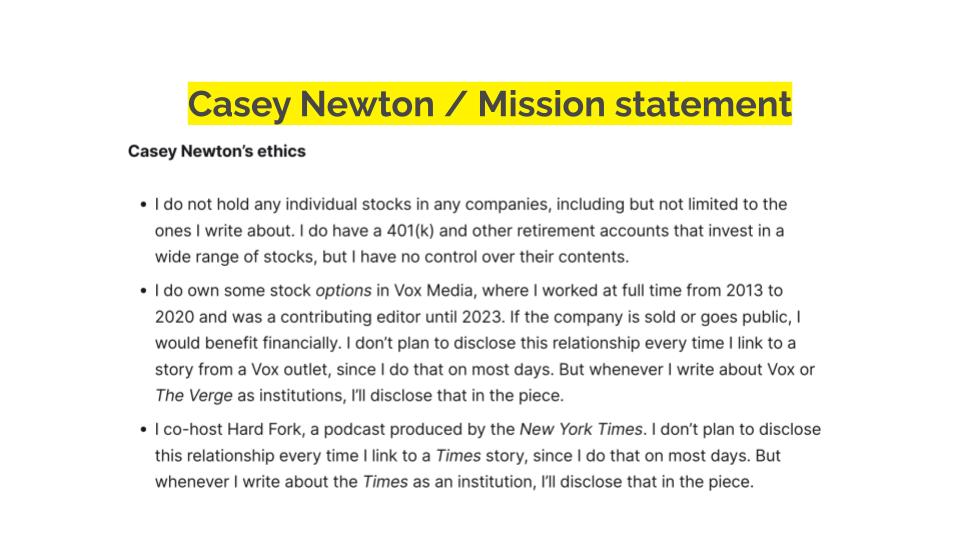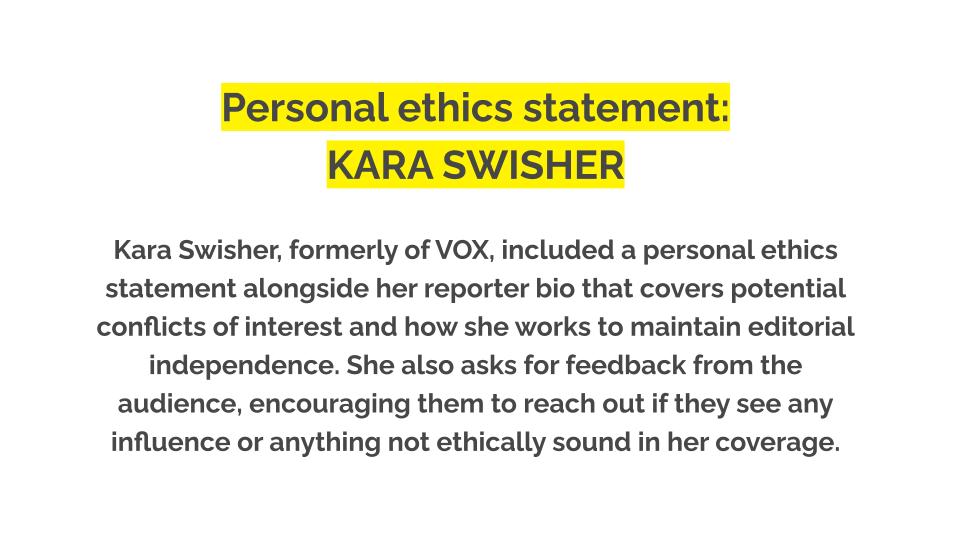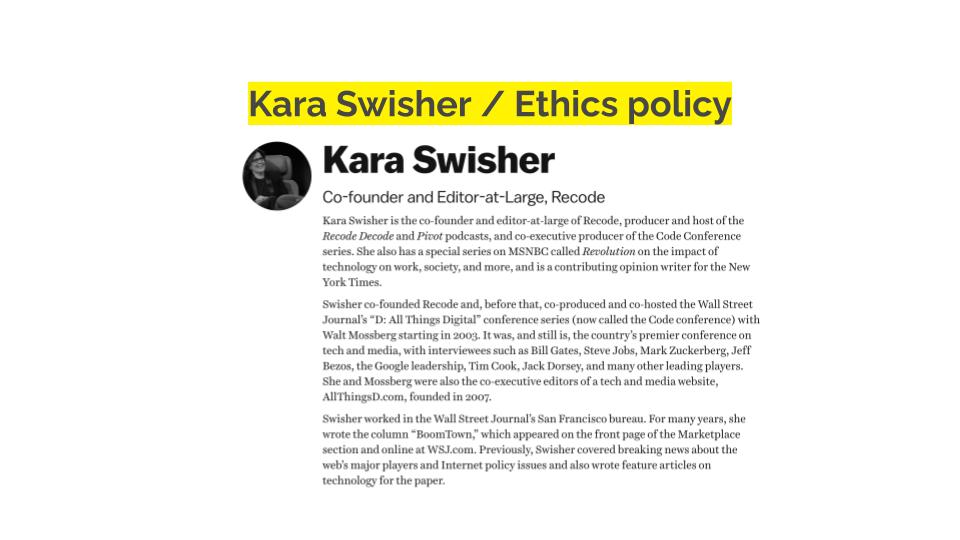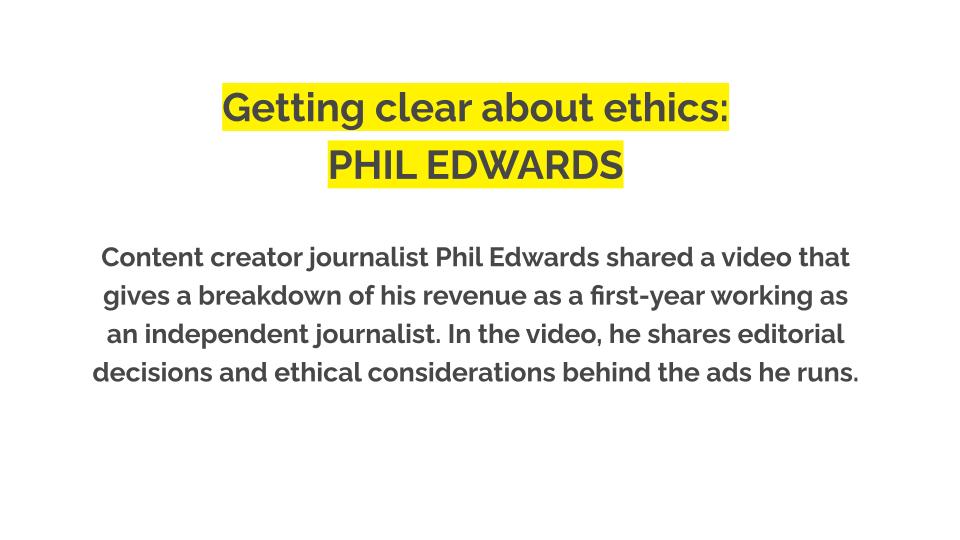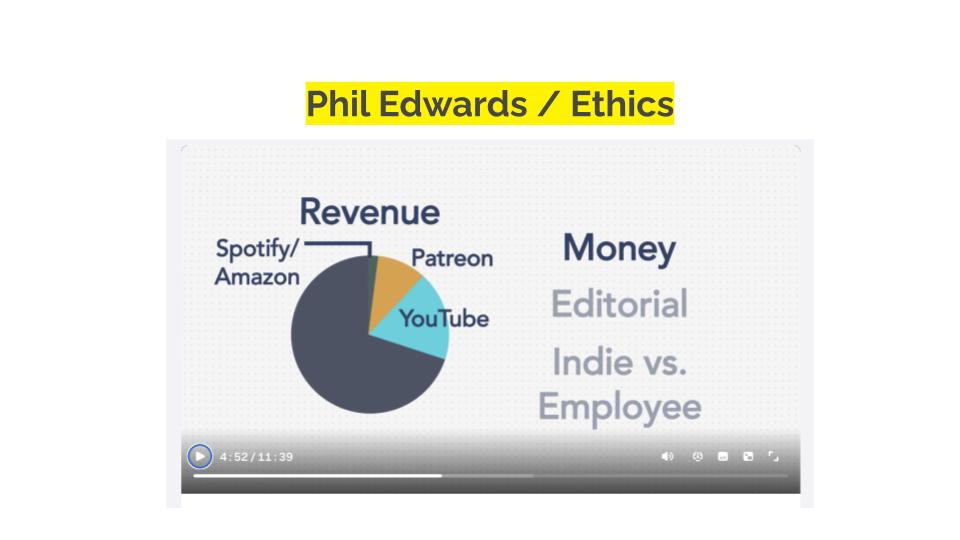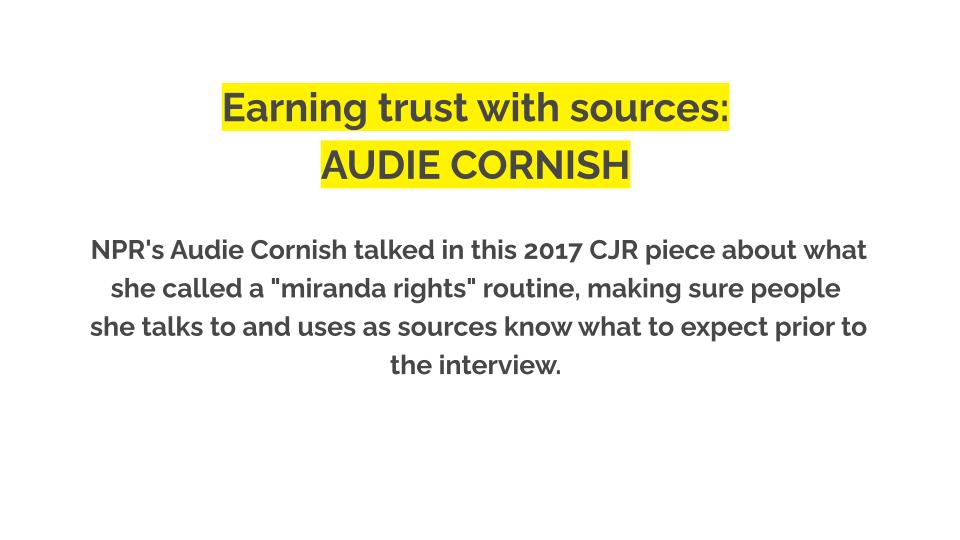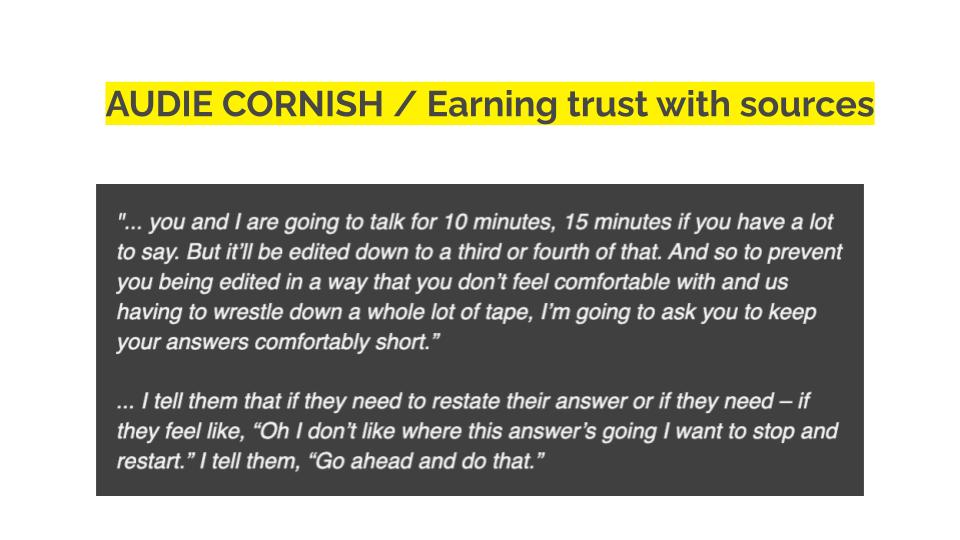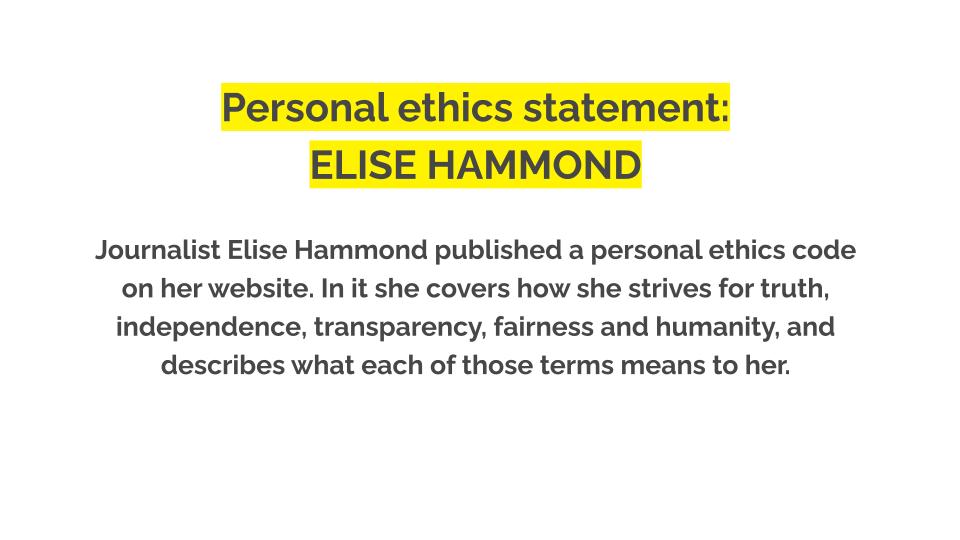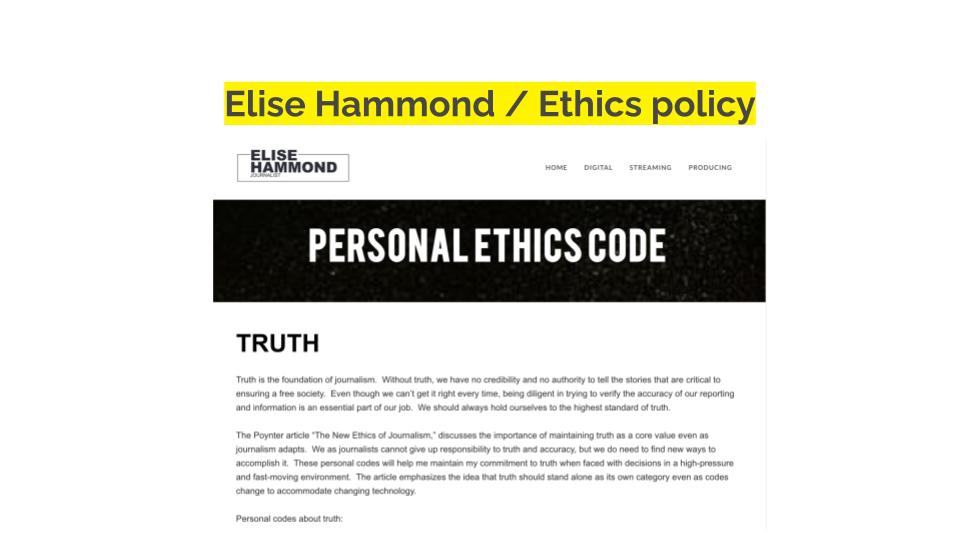Build trust as a freelance journalist
Special thanks to the Society of Professional Journalists Foundation, who funded the creation of this Trust Kit through a one-time grant. While the foundation supported the work, its staff did not weigh in on the content or have influence over which strategies we recommend. Read more about Trusting News’ funding here.
Whether you’re on a newsroom staff or freelancing, low public trust in news affects your work.
While many journalists face negative assumptions and accusations from the public, freelance journalists can sometimes face skepticism about their credibility above and beyond the misassumptions connected to newsroom staffers.
It may feel daunting, or even impossible, to work toward building trust on your own, especially when you might not have much control over your stories after handing them over to newsroom editors.
But there are actually many steps freelance journalists can take to establish credibility and earn trust, with or without the support of a news organization. This is true whether you’re a seasoned freelance journalist or just starting out.
This Trust Kit walks you through how.
There are many ways freelance journalists can build trust and establish credibility, with or without the support of a newsroom.
How journalists informed this guide: We hosted a survey, a brainstorming call, and asked individual freelance journalists to review this guide before publication to ensure these strategies and tips felt actionable, realistic and helpful. We also interviewed a few newsroom editors who frequently work with freelance journalists to gather their ideas and advice for these journalists looking to infuse trust-building into their work.
We’re so grateful to the journalists and editors who helped shape the content of this Trust Kit. See the list of the journalists here.
If you have feedback, ideas or questions, we’d welcome hearing from you! You can reach out to our team at info@trustingnews.org.

Goals
This Trust Kit helps you:
- Establish your credibility and mission as a freelance journalist
- Get on the record about your ethics
- Use transparency to build trust with sources and your audience
- Uncover more nuanced and relevant stories
- Engage with your local audience
- Work with newsroom editors to incorporate trust-building elements into your stories
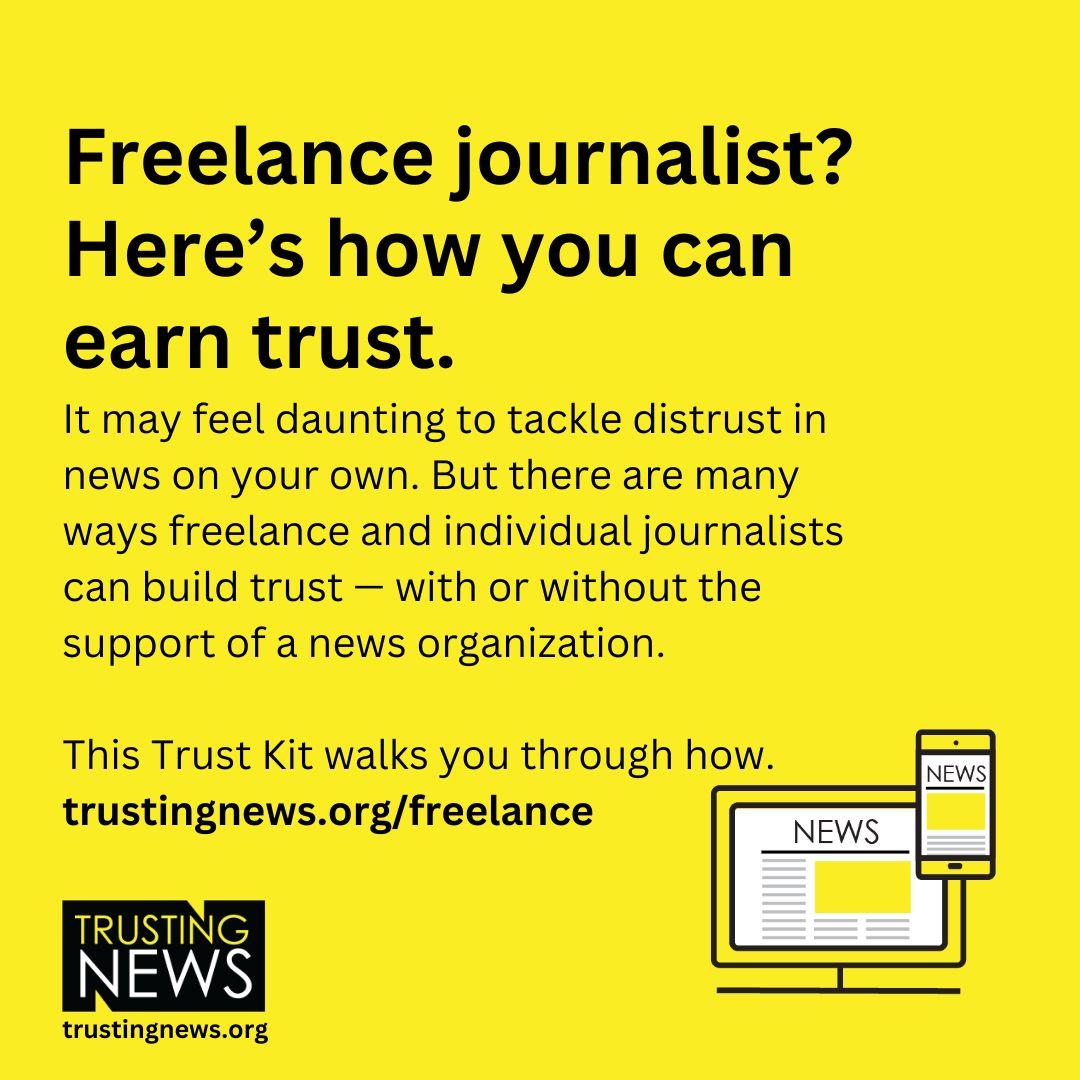
Who is this Trust Kit for?
This Trust Kit is aimed at helping freelance journalists earn trust with their audiences. Our strategies for building trust span from foundational best practices to more advanced recommendations. Some strategies may feel more relevant for journalists covering local news, but we hope the tips feel applicable to both national and local freelance journalists no matter your level of experience.
We also know the media landscape is rapidly changing, and there is a lot of overlap between journalists who freelance and those who are striking out on their own as independent content creators. While this Trust Kit focuses on helping freelance journalists, at Trusting News we’re also focused on supporting independent creator journalists. You can read more about that work here.
This is a living guide that will continue to be periodically updated with new examples and guidance. If you have questions or additions you’d like to suggest, reach out to Trusting News project manager Mollie Muchna at mollie@trustingnews.org.

Establish your credibility
Establishing your credibility is important, both to build trust with your audience and to gain rapport with newsroom editors.
We heard from freelance journalists that it can be a challenge to not have the weight and credibility of a long-standing organization backing your reporting. But, not having the constraints of a newsroom can also free you up to be even more transparent about your own ethics and mission, and how you work to be fair.
Building your credibility as a journalist does involve making your work findable—especially for freelance journalists. People want to know who you are before they hire you or agree to talk to you for a story. And let’s be honest: You also need clips to show you can write, report and do the journalism. That might mean starting small with a local or school publication, and that’s OK. Treat those opportunities seriously, as they can help open doors to bigger ones.
Here are some ways you can tell the story of your own credibility.
Write a mission statement
Whether part of an organization or not, we always encourage journalists to create an individual mission statement. It’s a great way to share the priorities of what you cover, but it also can give you something to point to in the face of misassumptions and accusations about your agenda and personal bias.
Southern California station KPCC/LAist had each of their reporters and producers create individual mission statements that explicitly share the topics and questions each reporter is committed to covering. The mission statements also gave reporters the chance to share more about their personal connections to the work they do, what led them to this coverage, and why it’s important to them.
In an ideal world, you could add some mission language to your byline or bio that run alongside your stories, as KPCC staff does above. But we know that may not be an option with many of the newsrooms and editors you may work with.
If that’s the case for you, you can instead publish it directly to your website and post it on your social media channels, pinning it to the top of your feeds.
You could also include it in your email signature, or include a link to it on your business card.
Draft a personal bio
If people searched your name and tried to find information about you, what would they learn?
News consumers and potential sources might make negative assumptions about your motives, ethics and credentials. So why not proactively tell a better story about yourself?
One way to do this is to write a personal bio. That bio can include basic information about yourself, such as contact information and credentials (where you’ve worked, how long you’ve been a journalist, etc.).
You could also include parts of your reporter mission statement or ethics policy in your bio.
We also encourage journalists to include bits of personality or information about yourself, when appropriate. That could be information like: Who are you in the community? What do you like to do?
As humans, when we feel like we know someone, or have a degree of connection or similarity, we’re much more willing to give people the benefit of the doubt. This is how people have often felt about TV journalists and meteorologists, right? People often trust individuals more than they trust a brand. So the more you can share about who you are as a person and journalist, the more people will likely be able to feel a sense of connection with you.
Where should these go?
A good place is an About page on your website or other social media profiles, or to link to it from your business cards.
If it feels appropriate, you could include a short bio when submitting stories for publication. This could be one-two sentences where you link people to another page, perhaps your website, where people can learn more about you, your ethics and your mission.
If you’re looking for more help, we have guidance on how to write a bio that builds trust here.
Some examples:
- Journalist Stephanie Schwartz’s LinkedIn bio is short but manages to summarizes her approach to journalism, her credentials and shares a bit about her personality and who she is as a person.
- In two prominent sentences on her website, journalist Ariel Zirulnick shares how she approaches her work as a journalist.
Share the ethics behind your work
People don’t give journalists automatic credit for the ethical decisions they make — they don’t assume journalists strive to be consistent, thoughtful and fair. Nor should they. People should be skeptical of the information and news they’re seeing online, right, especially when there’s so much misinformation swirling?
That’s why it’s important that you set yourself apart by getting clear about the ethics behind your journalism. One way to do this is through creating an ethics statement or ethics policy that details your ethical best practices.
Some things you could include in your ethics statement:
- Do you make corrections? How do you fact-check your stories?
- How do you make money? How does that impact which stories you cover, or don’t cover?
- Do you strive to make your content accurate and fair? What does that mean to you? How do you work to maintain independence? Do you donate money to causes or candidates?
- Are you committed to diversity? Do you work to find sources from the WHOLE community?
Here are two examples of what personal ethics statements can look like.
- Kara Swisher, formerly of VOX, lays out her personal ethics and how she aims to avoid conflicts of interest.
- Content creator journalist Phillip Edwards gets clear about his personal ethics behind which advertising and sponsorship deals he accepts.
If it feels challenging to write an ethics policy from scratch, you could also link out to SPJ’s code of ethics on your website or social media profile and explain how you adhere to the principles in their code.
SPJ’s four pillars of ethics:
- Seek Truth and Report It
- Minimize harm
- Act Independently
- Be Accountable and Transparent
Find the full code of ethics here.

Build trust with sources
Without always having the backing of a news brand, how will potential sources know you’re legit? The freelance journalists we gathered feedback from said this is a struggle, especially when covering new communities or topics.
Skepticism from sources is common, even for journalists at well-known organizations. Most people (78% according to Pew Research) have never talked to a journalist before, so it makes sense that people might have questions or hesitations around being interviewed.
Here are some ways you can share what qualifies you to tell their story and help the process feel less risky. While these strategies may not always get you a call back from governor’s office, they can help you build trust with community members who may be wary of getting on the record as a source.
Explain your credibility
If people aren’t familiar with your name, or can’t easily find information about you, how will they know you can be trusted to accurately tell their story?
As journalists, it’s up to us to explain how we’ll report people’s stories fairly and accurately, and get clear about how we won’t try to twist their words or use what they say to harm them.
One way you can do this is to invite them to get to know you and your own work. Do you have credibility with this topic? Is this something you’ve been covering over time? Can you readily share a link that shows your body of work — on the topic you’re covering or representing your reporting in general?
Do what you can to make them comfortable with the interaction, and with you specifically. Point to any information you have about who you are as a journalist, whether that’s a mission statement or pointing out something about what you have in common. Get clear that you value accuracy and fairness, and that you have a desire to do right by their story.
Resource: Interviewing vulnerable communities
Being a source is vulnerable for most, but it’s especially vulnerable for certain groups of people, such as immigrants or refugees. For some, talking to a journalist may put them at risk with the law or with their community. If you’re a freelance who covers stories about vulnerable communities, it’s important to explain the reporting process as best you can and get specific about how you’ll work to protect your source’s safety.
We love this postcard resource created by PublicSource that helps explain journalistic norms to interviewees not familiar with U.S. press practices. You can download it in a few different languages here.
Talk through logistics
Sharing more about what the interview will be like ahead of time can help people feel more comfortable, especially if you suspect it may be someone’s first time talking to a journalist. It’s a similar strategy to the one many journalists deploy of asking easier questions first, then gradually advancing to more difficult questions as both parties feel more at ease.
Here are some questions you could preemptively answer to help set expectations with sources ahead of or at the start of the interview.
- What’s the deadline for your story? When do you need to interview them by?
- Where will the interview take place?
- Will you be recording audio? If so, will that be for your note taking or for publication?
- Will you be taking photos or shooting video? If visuals will be involved, do you hope to capture certain things about the person’s surroundings or appearance?
- How long should they expect to spend with you?
Share the reporting process and scope
When interviewing everyday people in the community, it can be helpful to share more about your reporting process and the scope of your reporting.
This includes:
- Sharing the general angle of the story you’re reporting
- Whether you’re planning just one story or if you’re committed to write an ongoing series
- How many people you’re planning to talk to
- Whether you’ll run quotes by people or not prior to publication (Note: most publications do not allow this, so if this is something you’re planning on doing, it’s best to check each newsroom you’re writing with to see if they have a standing policy.)
We know as a freelance journalists, you may not know when a story will run, or where it might appear in a newspaper or publication. And you don’t always know if an editor will cut quotes or entire sources from your story. Get honest about the level of control you may or may not have after handing off your story to editors to help expectations and not surprise them later on in the process.

Engage with your audience
If we want our coverage to resonate with people, we have to first examine if we’re providing news that feels relevant and connected to people’s daily lives. Often that involves thoughtfully asking people what kind of news coverage they want to see.
As journalists, we can’t and shouldn’t always cater to each individual’s version of reality. But there’s a lot we can learn about what kind of information people in our communities want and need — if we as journalists take the time to ask.
Plus, we know giving people space to talk about their perceptions and preferences around news helps build trust. In one research study, we found when journalists took the time to listen to their audience, it helped build a sense of connection and increased people’s trust in those journalists. Not only that, but journalists who participated said it helped them gain insights into how they could better reach people they weren’t already reaching.
We know this type of engagement takes extra time — time that as a freelance journalist you’re likely not getting paid for. But investing in conversation and truly listening to your audience can be powerful way to establish trust.
Below are three ways you can inject engagement into the reporting you’re already doing.
Listening to find fresh story ideas
At Trusting News, we’re big proponents of actively getting curious and listening to people’s experience with the news.
Why? We know when journalists make the time to listen to community members it helps build trust. Plus, journalists have told us these types of interactions have helped lead to new story ideas or more nuanced coverage.
We suggest taking some questions for our community interview guide and fitting them into your daily interactions.
Those daily interactions might include asking some questions:
- At the end of interview with sources
- When you’re talking with friends and family about your job or the media
- In interactions in the community, whether at a coffee shop, Uber ride or community event
Some questions you could ask:
- What are three things you wish were covered more?
- What do journalists often get wrong about you or about things in your life?
- What kinds of stories or information would you like to see more from local news organizations?
Respond to questions and feedback
Regularly responding to your audience not only helps you understand what your audience thinks of your coverage, but it also helps you demonstrate that you really DO value hearing from them (both practices that help build trust!).
So, try to make it easy for people to contact you with questions or feedback. That means including contact information or a contact form on your social media profiles or on your website, inviting people to reach out if they have questions or concerns, and responding when appropriate.
We know this may not be possible for every story you write, as not every publication or newsroom editor will want to run your email with the story. But when it feels appropriate, ask for your email address to go alongside your byline in the story.
(Note: Not every person’s comment or email is worthy of a response! But sometimes, the public’s complaints about specific media stories are actually just misunderstandings about journalistic standards and how you work to be fair. We have more guidance on how to thoughtfully respond to feedback in our Comments Trust Kit.)
Explain how you're different than "the media"
When people make sweeping statements about “the media,” it’s hard not to get defensive or to take it personally. Many of the freelance journalists who weighed in on this Trust Kit agreed: It’s incredibly frustrating when people assume your news coverage is biased based on other media coverage or information they’re seeing.
But there is a lot of journalism out there, and not all of it is good. So if someone is talking about how bad or biased the media is, remember that you don’t have to defend the entire media industry. That doesn’t mean harping on other journalists or outlets, but instead, focusing on defending your own coverage by explaining how you work to be fair and ethical. Here are two ways you can do that:
- First, show empathy for their perspective by agreeing that there is unethical journalism you don’t stand behind. It can go a long way with people to acknowledge that the news feels overwhelming and depressing, and to have a journalist affirm that it is indeed challenging to know if what you’re seeing online or on TV is fair and accurate. Follow up by sharing some news outlets or coverage you think ARE getting it right. Advocate for ethical journalists and outlets.
- Second, focus on what you most want people to know about your work. You can show both diplomacy and humility while still standing up for your coverage. Get specific explaining how you’re working to do things differently, and if you can, point them to examples that demonstrate that (maybe that’s an FAQ, your ethics policy or mission statement).
If you need more help on how to respond and defend your work, we have more guidance in our Comments Trust Kit.

Get transparent about your process
Research shows when journalists are transparent and provide explanations and insights into their processes, it improves people’s perception of journalists. That’s why at Trusting News, we’re big fans of journalists injecting transparency into all their interactions with the public — whether through social media posts, newsletters or in stories themselves.
As a freelance journalist, you might be working with newsrooms that won’t allow you to add transparency elements to your coverage. And oftentimes, this will be extra work that as a freelance journalists you won’t get paid for. But there are reasons to push for it if you can. For mission-driven journalist who care about building trust, a little bit of transparency can go a long way in establishing yourself as a thorough, thoughtful journalist.
Here’s what that transparency can look like.
What should I get transparent about?
Transparency elements are designed to tell your audience what you want them to know about you — your processes, your motivation, your ethics and your values.
We’ve heard from journalists we work with that it can be tough to picture what transparency should look like — especially in daily content.
One simple way to get started: If you have a story about a topic likely to create controversy, or if it’s a story you put extra care into, consider addressing how you’re reporting the story. That could include:
- How many sources you talked to
- Where you found the information
- What you took extra care with
- How you worked to be fair
- How long it took you to report the story
Another tactic is to make a list of what people have asked you to explain about your journalism or stories in the past, or what you *wish* more people understood about your reporting. Once you have a list, answer those questions and stick the FAQ where your audience will see — like on your website and on your social media.
Here is an example of what an FAQ can look like: Reporter Sabrina Halvorson added an FAQ to her website that quickly explains her mission, ethics, approach to her work, as well as some reporting policies.
Where should I put these transparency elements?
Typically these transparency elements run as editor’s notes, boxes, or behind-the-scenes newsletters and videos that walk users through how or why a story was reported. (We have a ton of examples and guidance around how to get transparent in our Transparency Trust Kit.)
However, we know not every newsroom will want to include transparency elements like this, especially if it’s not part of the newsroom’s normal routine. That’s OK! You can still share this information out with your audience on your social media platform.
Here’s an example of how Atlanta Journal-Constitution reporter Jennifer Peebles did this in a X/Twitter thread. In a few tweets, she explained how and why she works to get public records, and why public record laws are so important. Throughout the thread, she weaves both humor and personal credibility into the transparency around how this aspect of journalism works.
- Washington Post reporter Emily Davies uses her own Instagram to share behind-the-scenes information from her reporting process. This includes getting transparent about how she sourced stories, the editing process, and, in one instance, how she had to do some “unconventional reporting (like from bodies of water, in a bathing suit, using flotation devices so I could take notes and pictures on my phone),” Davies writes.
- Reporter Erin Bormett used X to explain what a day in the life of a reporter looks like, detailing what her day looked like covering a tornado and its aftermath in South Dakota.
- During the height of the COVID-19 pandemic, reporter Joe Sneve used X to talk about the goals behind his approach to tracking down how many legislatures have contracted COVID-19 while hosting in-person sessions.
You can find more examples of how reporters have gotten transparent with their coverage in our Transparency Trust Kit, or find some examples at the bottom of this Freelance Trust Kit.

Advice from newsroom editors
Just like journalists can’t convince everyone in the public to trust their news, it’s unrealistic to expect that every newsroom editor will care about building trust with their audiences. Not all journalists see building trust as a valuable investment — though we wish that weren’t the case!
If you’re a journalist who values trust-building, how can you make a compelling case for the work? We asked some editors at partner newsrooms who work frequently with freelance journalists. While every newsroom and editor will differ, here’s some of their general guidance for how freelance journalists can build relationships with newsroom editors.
Build trust with editors
When reporting for a news organization for the first time, trust is essential. Like any relationship, editors will trust you the more they get to know your credentials, mission and your approach to reporting. Some ways you can build that trust: Request to schedule a quick call with them and offer to answer any questions; give status updates about the story along the way, explaining what you’re learning and how the story is evolving; over-communicate any changes or shifts to the story.
But remember: The relationship between freelance journalists and editors requires trust and respect on both sides. We hope editors will also return this trust by investing in their freelance jouranlists, and getting clear about their about expectations and timelines for content.
Establish your credibility
When pitching stories, you likely already share some of your credentials, past publications you’ve written for, and writing samples. But go further — explain why you’re the best person to report this story. Editors said it wouldn’t hurt to include a mission statement or ethics statement in your initial pitch, and that those elements could help with establishing credibility early on.
Make their jobs easier
Before pitching a story, thoroughly read through the outlet’s pitching guidelines or pitch call-outs on social media.
If you want to add any extra elements or materials to your story, include all the extra material — whether it be a box, a bio, or any transparency elements — when submitting your stories. Be proactive about suggesting how and where these transparency elements could appear in the story.
Be upfront
If your story includes special elements like a box or bio, or specific information you think is important to include in the story — let editors know ahead of time. Flagging these elements to editors and explaining why they are important will help make a more compelling case for why editors should include them in the story.
Leverage it as part of your pitches
Just like some pre-reporting can strengthen a pitch, understanding what’s important to community members can help you make a compelling case for your story pitch. That means if you’re investing time to ask people in your community what kind of topics they want to see more coverage of, be sure to highlight that when pitching to editors. And if you hear skepticism and confusion from the public that leads to your desire for transparency, mention that, too.

Resources for freelance journalists
See how other journalists are doing it
For inspiration, here are some examples of how individual journalists are infusing transparency into their work. For more examples, check our our example database.
Thanks to these journalists
We appreciate the journalists who helped shape the content of this Trust Kit. Special thanks to:
- Hazel Becker
- Scott Coleman
- Nicole DeCriscio
- Richard Eisenberg
- Omar Gallaga
- Kathy Jennings
- Beth Lipoff
- Christiaan Mader
- Phillip Pantuso
- Xintian Tina Wang
If you find yourself getting stuck, need help brainstorming, or have completed the work in a Trust Kit and would like our team to review and give additional advice, reach out to us at info@trustingnews.org or send us a message on X, BlueSky or LinkedIn.
This Trust Kit was last updated April 4, 2025.
